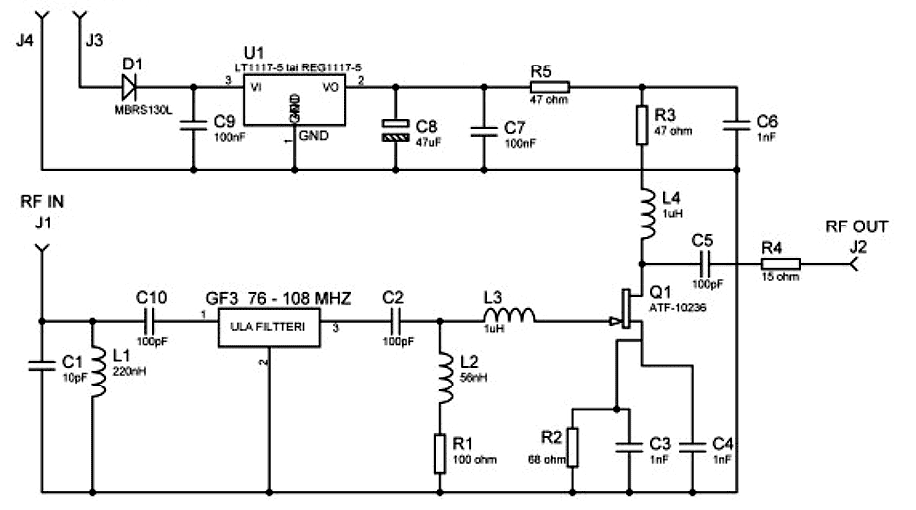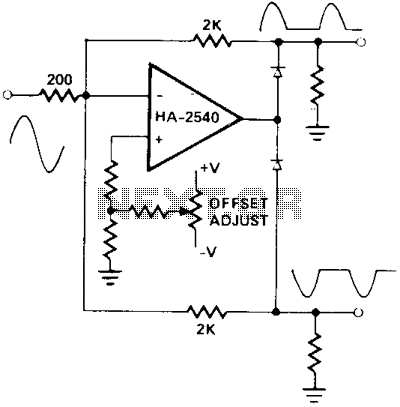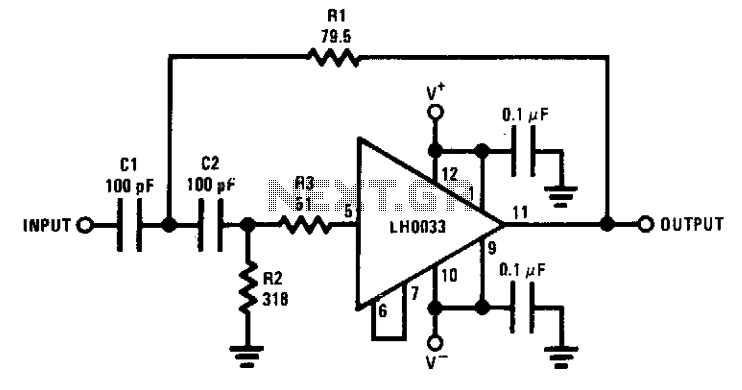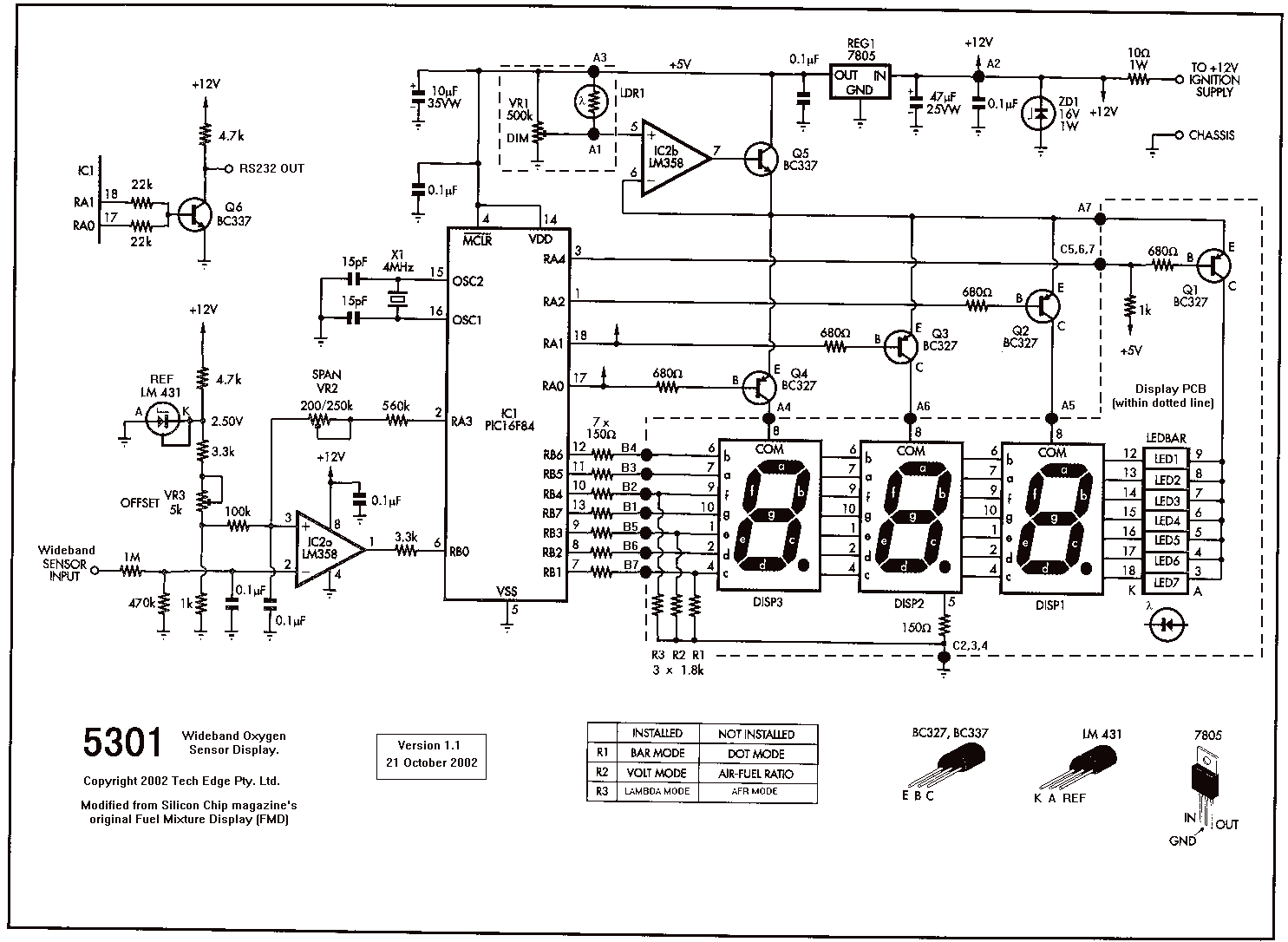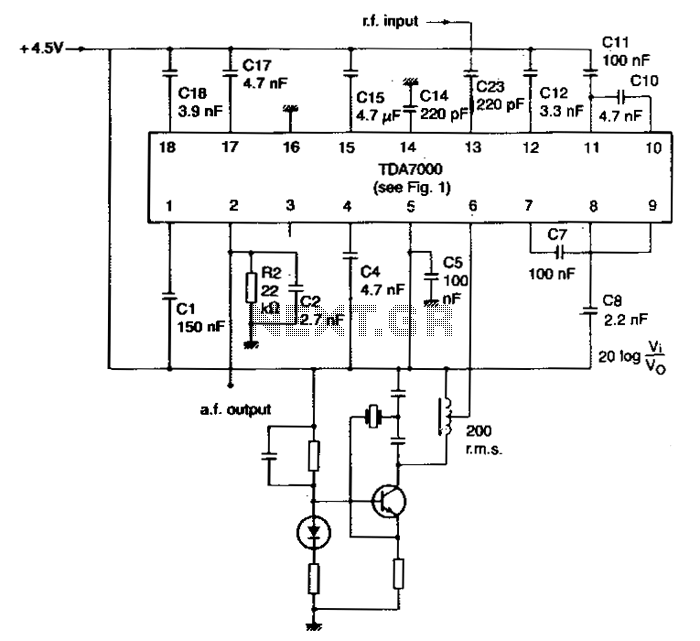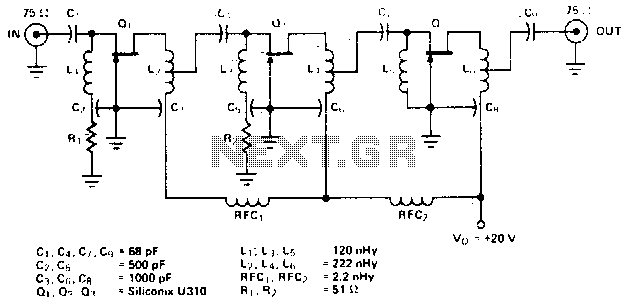
3 Band Equalizer
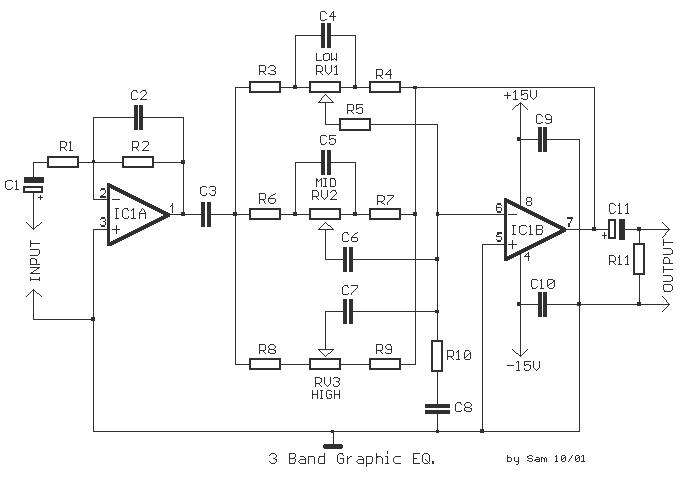
The description refers to a classic three-way tone regulation circuit, which allows for the adjustment of low, mid, and high frequencies of an acoustic signal. The boost or cut can be adjusted within a range of ± 18 dB/oct. The circuit operates on a power supply of ± 15V, but it can also function with a single power supply ranging from + 9V to + 30V. For this to happen, pin 4 of IC1 must be connected to 0V and the circuit must be set up as shown in fig. 2. This configuration entails supplying half of the power to the non-inverting input of IC1, which corresponds to pins 5 and 3. These pins are subsequently not grounded.
Building on this, it is evident that the circuit's functionality is based on the manipulation of signal frequencies. The ability to regulate the tone in three ways means that the user can fine-tune the output to achieve the desired acoustic effect. The range of boost or cut of ± 18 dB/oct further enhances this customizability, enabling the user to significantly amplify or attenuate the signal.
The power supply flexibility of the circuit is another noteworthy feature. While the circuit operates on a ± 15V supply under normal conditions, it can also function on a single supply of + 9V to + 30V. This makes the circuit versatile and adaptable to different power supply conditions. The connection of pin 4 of IC1 to 0V and the provision of half the power supply to the non-inverting input of IC1 (pins 5 and 3) are crucial steps in this process. These pins are not grounded, which is a necessary condition for this alternative power supply mode to work.
In conclusion, this three-way tone regulation circuit is a classic design that combines versatility, customizability, and adaptability. Its ability to adjust low, mid, and high frequencies of an acoustic signal, combined with its flexible power supply options, make it a robust and reliable choice for various applications in the field of audio electronics.A classic circuit of regulation of tone of three way, with which we can regulate low, mid and high frequencies, of acoustic signal. The boost/cut can be regulated in the range of ± 18 dB/oct. In the circuit the supply is ± 15V, but can be also supplied with alone supply + 9 until + 30V, it is enough it is connected pin the 4 IC1, in the 0V and is connected the circuit with as it appears in fig.
2, giving half the supply in the not inverting entry of IC1, in the 5 and 3 equivalents, which are henceforth not connected in the ground. 🔗 External reference
Building on this, it is evident that the circuit's functionality is based on the manipulation of signal frequencies. The ability to regulate the tone in three ways means that the user can fine-tune the output to achieve the desired acoustic effect. The range of boost or cut of ± 18 dB/oct further enhances this customizability, enabling the user to significantly amplify or attenuate the signal.
The power supply flexibility of the circuit is another noteworthy feature. While the circuit operates on a ± 15V supply under normal conditions, it can also function on a single supply of + 9V to + 30V. This makes the circuit versatile and adaptable to different power supply conditions. The connection of pin 4 of IC1 to 0V and the provision of half the power supply to the non-inverting input of IC1 (pins 5 and 3) are crucial steps in this process. These pins are not grounded, which is a necessary condition for this alternative power supply mode to work.
In conclusion, this three-way tone regulation circuit is a classic design that combines versatility, customizability, and adaptability. Its ability to adjust low, mid, and high frequencies of an acoustic signal, combined with its flexible power supply options, make it a robust and reliable choice for various applications in the field of audio electronics.A classic circuit of regulation of tone of three way, with which we can regulate low, mid and high frequencies, of acoustic signal. The boost/cut can be regulated in the range of ± 18 dB/oct. In the circuit the supply is ± 15V, but can be also supplied with alone supply + 9 until + 30V, it is enough it is connected pin the 4 IC1, in the 0V and is connected the circuit with as it appears in fig.
2, giving half the supply in the not inverting entry of IC1, in the 5 and 3 equivalents, which are henceforth not connected in the ground. 🔗 External reference
